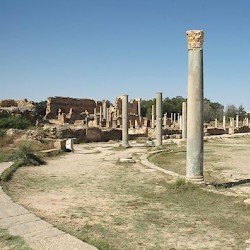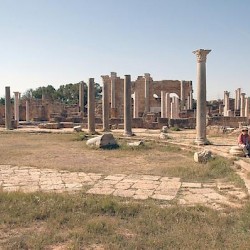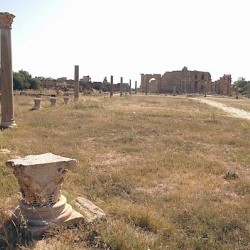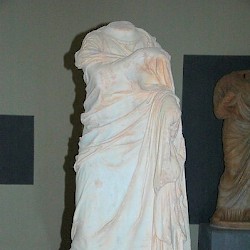Lepcis Magna, Palaestra
Lepcis Magna: Phoenician colony, later part of the Carthaginian empire, the kingdom of Massinissa, and the Roman empire. Its most famous son was the emperor Septimius Severus (r.193-211).
Palaestra
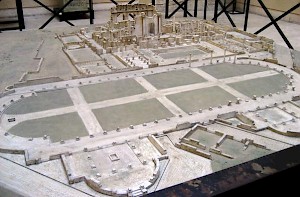
The Palaestra of Lepcis Magna was an addition to the Hadrianic Baths, perhaps dating to the reign of Commodus (r.180-192). Essentially, it is nothing but a field where men - only men - could perform their exercises. Because they wore no clothes, the field could also be called a gymnasium (from Greek gymnos, "naked").
As was often the case, the Palaestra was rectangular in shape, with semicircular additions to the short sides, more or less like our stadiums for athletics. The race track had a length of about 100 meters. On hot days, the men could sit and relax in the shade of the porticos that surrounded the field.
Usually, people visited the Palaestra before they went to the bathhouse. Among the exercises they liked were running, wrestling, and ball games. The first two activities were useful to get into shape; playing with balls was considered to be good for the lungs, an was absolute necessity for orators.
